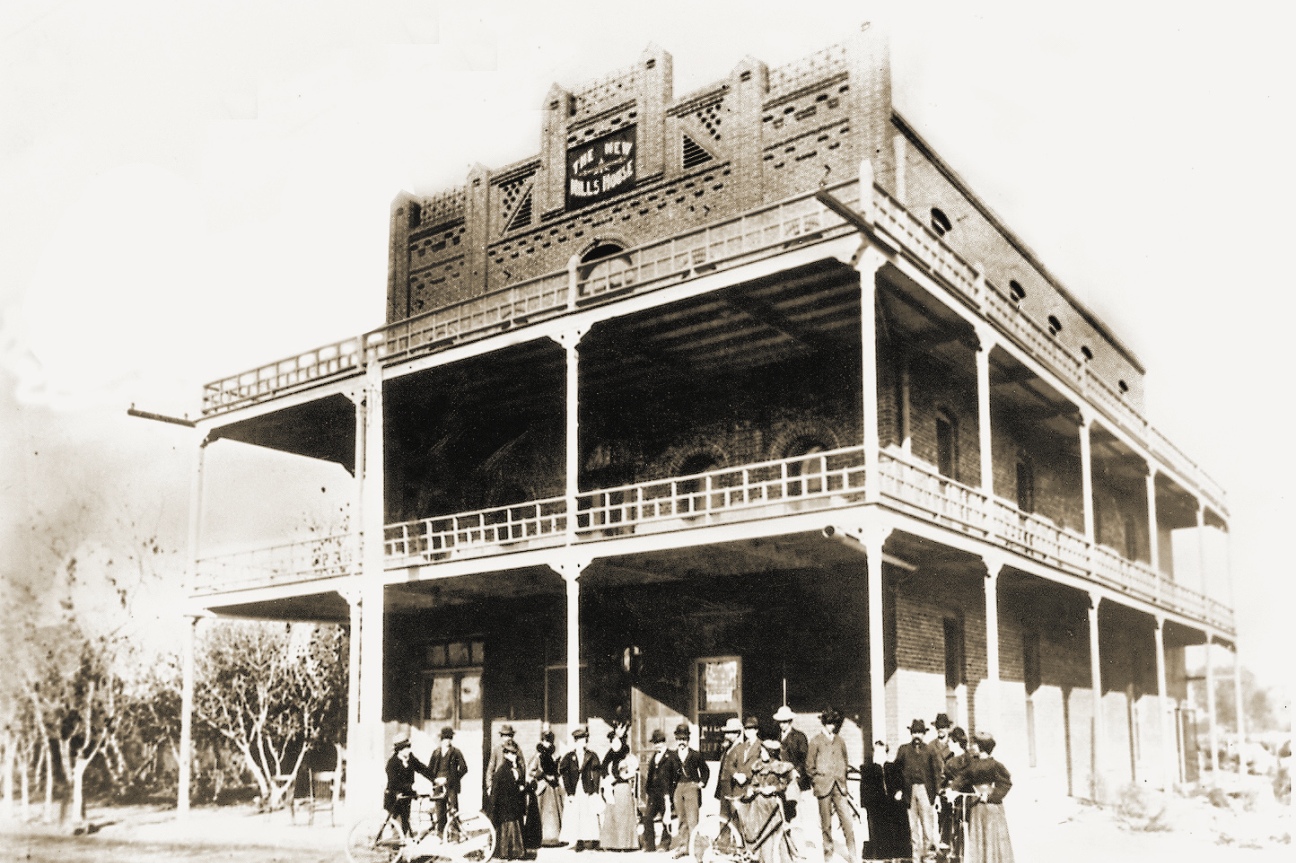Locating Lowell
Flagstaff was but 12 years old in 1894 and still struggling to exist, but the rough town became a topic of international attention when an eminent New Englander arrived to scout possible locations to establish an observatory. The opening of Lowell Observatory was the first of several major scientific organizations to locate in the town that was already well-known to scientists and explorers for it[...]
Hard Times: The WPA in Phoenix
For those born after WWII, it is hard to imagine the widespread unemployment and accompanying anxiety of families who could not find work during the early years of the Great Depression.
Morenci: 1903 Strike
The store pictured here was constructed at Morenci in 1901 by the Detroit Copper Company and known as the DC Store. Its rear wall and basement were fashioned from limestone and the balance of the structure was built with red granite quarried from nearby Morenci Canyon.
A forest by any other name
The July 3, 1908, edition of Flagstaff’s Coconino Sun announced: “The San Francisco Mtns and Grand Canyon(South) National Forests have been consolidated under the name of the Coconino Nation(al) Forest. While this will be confusing for a few years, it will greatly simplify the work of the Supervisor’s office.”
Manuelito
In the mid 1800s, Manuelito led the Navajos in some of the fiercest battles of the Indian wars with the U.S. He was born near Bear’s Ear in Utah and belonged to the Bit’ahni clan.
‘Edward Jackson’
Little is known of Jackson’s early life. He claimed to have been born in Denver in 1877, but may have been born in San Antonio in 1878. He volunteered for military duty during the Spanish-American War, served in Manila in 1898 and — like many of his contemporaries — returned home with dysentery that would reoccur throughout his life.
The New Mills House
Susie and Ernest Mills came to Arizona in 1881. Ernest was a Canadian who ran away from home to join the American Civil War. He served three years with an... […]
Arthur R. Smith and the ‘Phoenix Tribune’
Small town newspapers have always kept community members informed of the latest births, marriages, deaths and church socials, controversial issues, news and even gossip.
The ‘dry heat’ arrives in Arizona
In his 1878 book “Picturesque Arizona,” Enoch Conklin quotes Dr. A. M. Loryea: “The heat in Arizona, though high, is endurable in consequence of the dryness.” His statement may be the precursor to Arizona’s most quoted weather phrase: “but it’s a dry heat, so you don’t mind it.”
Lady of the Red Rose Bush
In 1865, Margaret (Maggie) Griffiths Hunt McCormick, the lovely young bride of then-Territorial Secretary of State Richard C. McCormick, traveled with her groom to their new home in Prescott. To remind her of her childhood days, she planted a rose bush from New Jersey next to her Arizona home, which was the Governor’s Mansion, as Richard was named the second territorial governor in 1866.
Oliver Comstock, Unsung Arizona Hero
Sporting a pith helmet, linen suit and big white mutton chop sideburns, Oliver E. Comstock pedaled his bicycle along Tucson’s dusty roads with a soup kettle hanging from the handlebars. He will never be as famous as Wyatt Earp, but he was a real hero to Tent City residents.
Early Arizona Aviator Ralph Vaughan
Ralph Vaughan came to Arizona in 1929 to open a commuter air service from Globe to Phoenix. As a young adult, he became interested in flying and decided to make a career out of it.
















